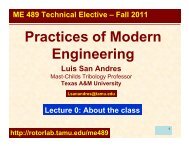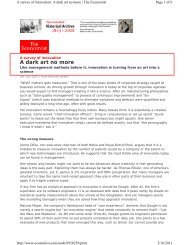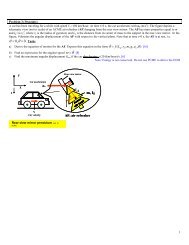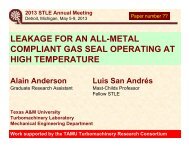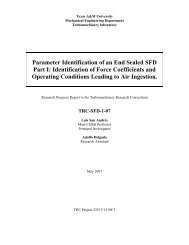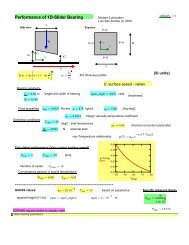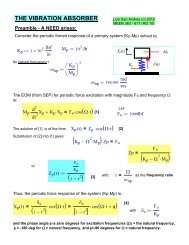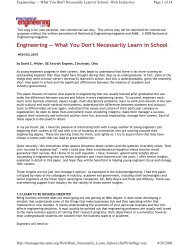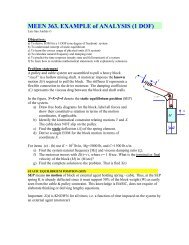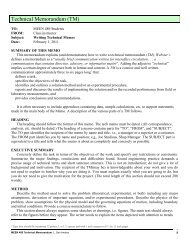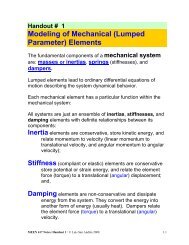TRC-SFD-1-06 - Tribology Group - Texas A&M University
TRC-SFD-1-06 - Tribology Group - Texas A&M University
TRC-SFD-1-06 - Tribology Group - Texas A&M University
Create successful ePaper yourself
Turn your PDF publications into a flip-book with our unique Google optimized e-Paper software.
II Literature ReviewDella Pietra and Adilleta [3, 4] summarize most of the experimental and analyticalworks conducted on <strong>SFD</strong>s during the past 40 years. Reference [3] details the rudiments of<strong>SFD</strong> operation, the theoretical models advanced and the experimental research conductedon controlled motion test rigs. The topics reviewed include fluid inertia, groove geometry,end sealing, and lubricant cavitation and their effect on the forced performance of <strong>SFD</strong>s.Reference [4] addresses to rotordynamic analyses and field evaluation of <strong>SFD</strong>s installedin actual rotating equipment. The review closes with descriptions of unconventional andnovel <strong>SFD</strong> designs.References [5-10] report <strong>SFD</strong> parameter identification on controlled motion test rigsusing time and frequency domain approaches. In general, where damping and inertiaforce coefficients have been experimentally determined, classical lubrication modelsrender reliable predictions only for damping coefficients [11]. To date, the main issues ofcontinued scrutiny include the proper prediction of fluid inertia coefficients, the adequatemodeling of circumferential grooves and end seals, and the understanding of gasingestion and entrapment.Common end seals in <strong>SFD</strong>s include O-rings, piston rings, and end plates (clearancegap). The design of end seals is highly empirical and requires of “leakage correctionfactors” that can only be extracted from careful experimentation [12]. Levesley andHolmes [13] find experimentally that piston-ring end seals lead to larger dampingcoefficients than when using end plate seals, for example. On the other hand, fromrotordynamic tests, De Santiago and San Andrés [14] show that integral dampers sealedwith simple end plates are effective in increasing the overall damping while reducing thelubricant trough flow. The experiments show that rotor synchronous response amplitudeswhile crossing two critical speeds are proportional to the mass imbalance displacement,thus evidencing the linearity of the integral <strong>SFD</strong> elements. In [14], predictions ofdamping coefficients are in good agreement with the test data.More recently, Kim and Lee [15] present both an analysis and tests of a sealed <strong>SFD</strong>with a central feeding groove. Two types of seals are modeled, a single-stage and twostageliquid seals. Predictions including the two-stage seal agree with the test <strong>SFD</strong> inertiaforce coefficients, but underestimate the damping force coefficients.10



